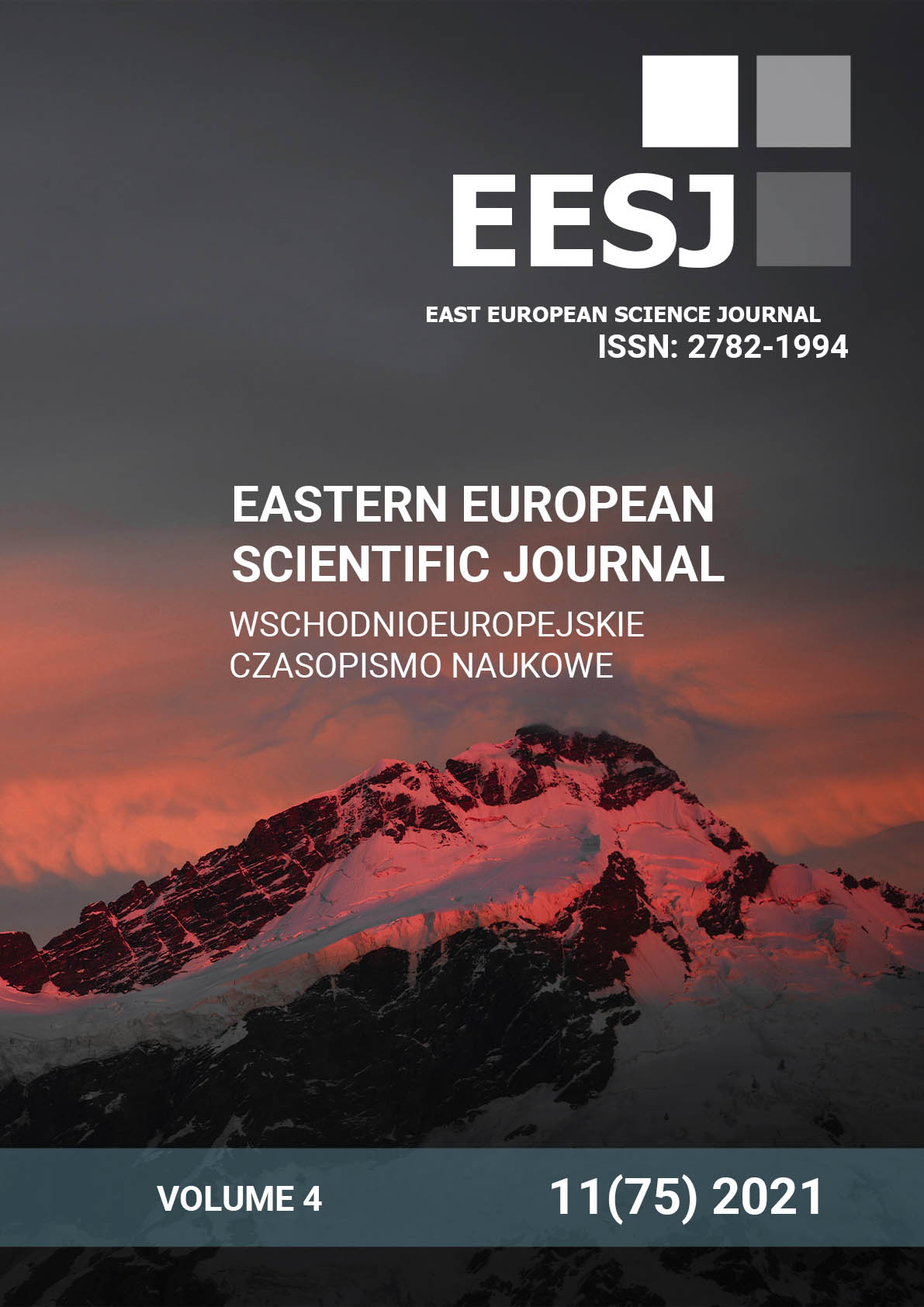HIGH-TEMPERATURE CONSOLIDATION AS A STRUCTURE CONTROL METHOD OF THE NANOPOROUS GLASSES
DOI:
https://doi.org/10.31618/ESSA.2782-1994.2021.4.75.178Ключові слова:
porous glass, nanoporous glass, structure, consolidation, electron microscopyАнотація
Nanoporous glass is a matrix for composite optical materials, in which, by impregnating various activators, it is possible to initiate the appearance of properties that are uncharacteristic for the composite materials. In this case, the main parameter of the structure of nanoporous glass is porosity, which can be controlled by the method of high-temperature consolidation. In this work, we have studied the effect of temperature consolidation on the structure of porous glass.
Посилання
Levitz P. et al. Porous Vycor glass: The microstructure as probed by electron microscopy, direct energy transfer, small‐angle scattering, and molecular adsorption //The Journal of chemical physics. – 1991. – Т. 95. – №. 8. – С. 6151-6161.
Komandin G. A. et al. Effect of moisture adsorption on the broadband dielectric response of SiO2-based nanoporous glass //Journal of Applied Physics. – 2019. – Т. 126. – №. 22. – С. 224303.
Mazilu C. et al. Nanoporous glass in Na2OB2O3-SiO2 oxidic system, for potential biomedical applications //Journal of optoelectronics and advanced materials. – 2007. – Т. 9. – №. 7. – С. 2036-2040.
Shakhgil’dyan G. Y. et al. Nanoporous glass with controlled pore size for high-efficiency synthesis of oligonucleotides //Glass and Ceramics. – 2019. – Т. 75. – №. 9-10. – С. 377-382.
Xia J. et al. Rare-earth doped silica microchip laser fabricated by sintering nanoporous glass //Optics letters. – 2005. – Т. 30. – №. 1. – С. 47-49.
Fedotov S. S. et al. 3-bit writing of information in nanoporous glass by a single sub-micro second burst of femtosecond pulses //Optics letters. – 2018. – Т. 43. – №. 4. – С. 851-854.
Lipatiev A. S. et al. Multilevel data writing in nanoporous glass by a few femtosecond laser pulses //Applied Optics. – 2018. – Т. 57. – №. 4. – С. 978-982.
Fedotov S. S. et al. Laser-induced cavities with a controllable shape in nanoporous glass //Optics Letters. – 2020. – Т. 45. – №. 19. – С. 5424-5427.
Barbillon G. Latest Novelties on Plasmonic and Non-Plasmonic Nanomaterials for SERS Sensing //Nanomaterials. – 2020. – Т. 10. – №. 6. – С. 1200.
Sharma B. et al. SERS: Materials, applications, and the future //Materials today. – 2012. – Т. 15. – №. 1-2. – С. 16-25.
Pan Z. et al. Surface‐enhanced Raman probing of biomolecules using Ag‐coated porous glass‐ceramic substrates //Journal of Raman Spectroscopy – 2005. – Т. 36. – №. 11. – С. 1082-1087.
de Barros Santos E., Sigoli F. A., Mazali I. O. Metallic Cu nanoparticles dispersed into porous glass: A simple green chemistry approach to prepare SERS substrates //Materials Letters. – 2013. – Т. 108. – С. 172-175.
Zou W. et al. Porous alumina aerogel with tunable pore structure for facile, ultrasensitive, and reproducible SERS platform //Journal of Raman Spectroscopy. – 2019. – Т. 50. – №. 10. – С. 1429-1437.
##submission.downloads##
Опубліковано
Номер
Розділ
Ліцензія

Ця робота ліцензується відповідно до Creative Commons Attribution-NoDerivatives 4.0 International License.
CC BY-ND
Автор дозволяє:
- поширювати — копіювати, передавати свій твір, навіть з комерційною метою.
Умови:
- автор не дозволяє змінювати — переробляти, розвивати твір (NoDerivs),
- слід зберігати посилання на автора у визначеній ним формі (Attribution).




